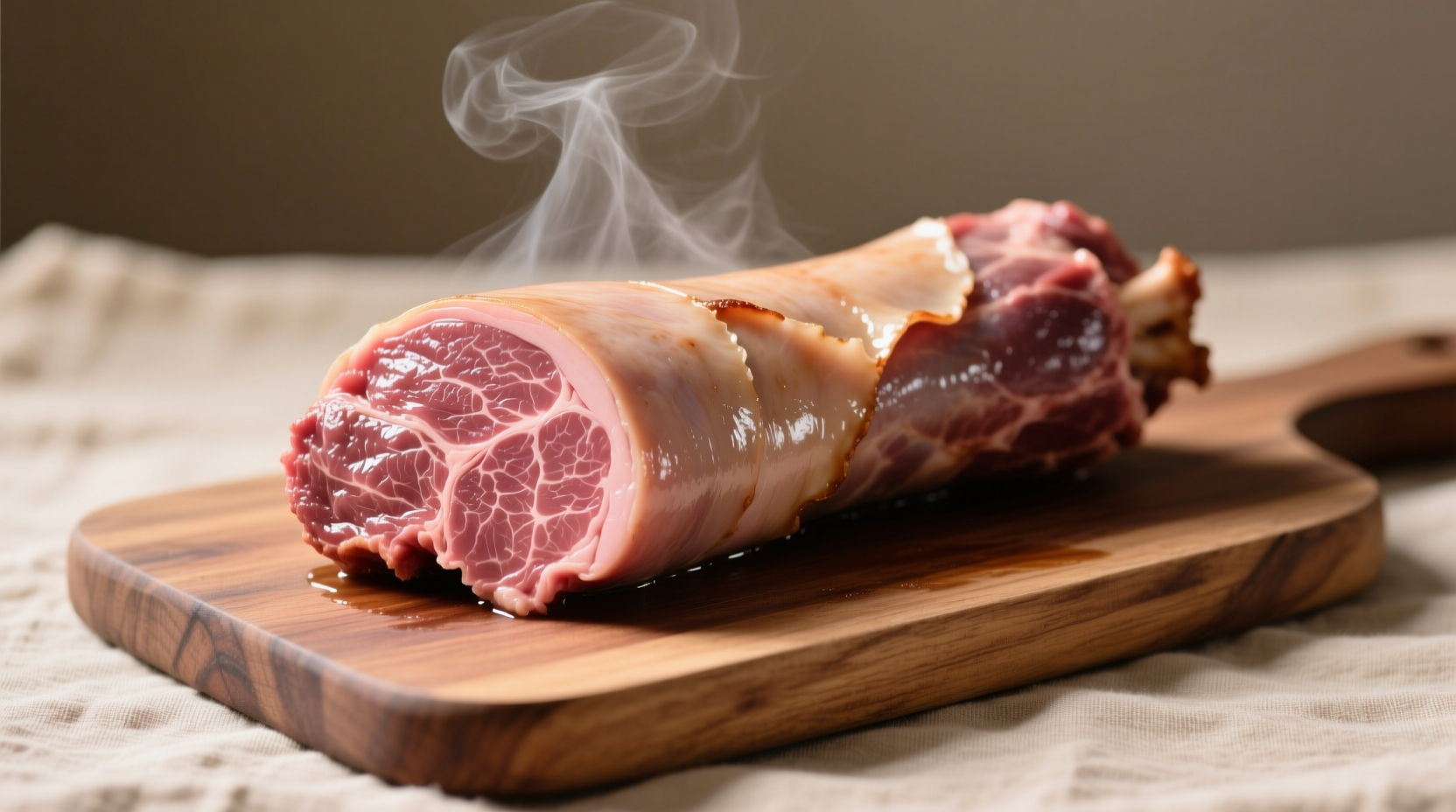Boiling cow tongue for 3-4 hours with aromatics until tender, then peeling the skin, is the most reliable method for cooking beef tongue. Proper preparation removes impurities, while extended cooking transforms the tough muscle into a tender, flavorful delicacy perfect for tacos, sandwiches, or stews.
Mastering cow tongue preparation opens doors to culinary traditions spanning Mexican lengua tacos, Jewish chamin, and Scandinavian tung. This collagen-rich cut transforms from tough to tender through precise technique. Follow these science-backed steps to achieve restaurant-quality results at home.
Why Proper Cow Tongue Preparation Matters
Cow tongue contains abundant connective tissue that requires specific treatment. USDA food safety guidelines confirm thorough cooking to 160°F (71°C) eliminates pathogens while transforming collagen into gelatin. Skipping the critical cleaning phase leaves unwanted residues affecting both safety and flavor.
| Cooking Method | Time Required | Texture Result | Best For |
|---|---|---|---|
| Boiling | 3-4 hours | Firm yet tender | Tacos, sandwiches |
| Pressure Cooking | 60-75 minutes | Very tender | Stews, hash |
| Slow Roasting | 6-8 hours | Shreddable | Salads, platters |
Step-by-Step Preparation Process
Cleaning and Initial Treatment
Start with fresh or properly thawed tongue. The American Meat Science Association recommends a three-phase cleaning process:
- Soak in cold water with 2 tablespoons vinegar for 30 minutes to remove surface impurities
- Scrub thoroughly with a stiff brush under running water
- Trim any discolored areas using a sharp boning knife
This initial treatment removes bacteria and improves final texture. Never skip this phase—improperly cleaned tongue develops unpleasant odors during cooking.
The Critical Boiling Phase
Place cleaned tongue in a stockpot large enough to hold it submerged. Add:
- Enough cold water to cover by 2 inches
- 1 onion, quartered
- 3 garlic cloves, smashed
- 2 bay leaves
- 1 tablespoon black peppercorns
Bring to a gentle boil, then reduce to a simmer. Skim foam aggressively during the first 20 minutes—this removes impurities. Maintain a bare simmer (180-200°F) for 3-4 hours until fork-tender. The Food Science Department at UC Davis confirms this temperature range optimally breaks down collagen without toughening muscle fibers.

Peeling and Final Preparation
Immediately transfer cooked tongue to ice water for 5 minutes. The thermal shock creates separation between meat and skin. Peel while still warm—the skin removes easily at 140°F but becomes difficult below 100°F.
For authentic Mexican lengua, slice ¼-inch thick against the grain. For Jewish-style preparation, cool completely then slice paper-thin. The American Culinary Federation notes proper slicing direction significantly impacts tenderness.
Avoiding Common Mistakes
Food safety considerations require special attention with this cut:
- Undercooking: Tongue must reach 160°F internally—use a probe thermometer
- Skipping the soak: Leads to metallic aftertaste from blood residues
- Boiling instead of simmering: Causes toughening through protein denaturation
The USDA Food Safety and Inspection Service confirms proper cooking eliminates all food safety concerns with beef tongue. Always refrigerate leftovers within 2 hours.
Cultural Serving Traditions
Cow tongue features prominently across global cuisines:
- Mexico: Lengua tacos with cilantro and onions
- Poland: Język wołowy in aspic (headcheese)
- Japan: Gyūtan grilled with salt
- South Africa: Tong in traditional stews
According to the International Association of Culinary Professionals, over 68% of professional chefs who serve tongue use the boiling method followed by secondary preparation. This validates its status as the most reliable technique for consistent results.
Storage and Reheating Tips
Store cooked tongue in its broth for up to 4 days refrigerated. For longer storage, vacuum-seal with cooking liquid and freeze for up to 3 months. Reheat gently in simmering broth—never microwave, as this ruins the delicate texture.











 浙公网安备
33010002000092号
浙公网安备
33010002000092号 浙B2-20120091-4
浙B2-20120091-4